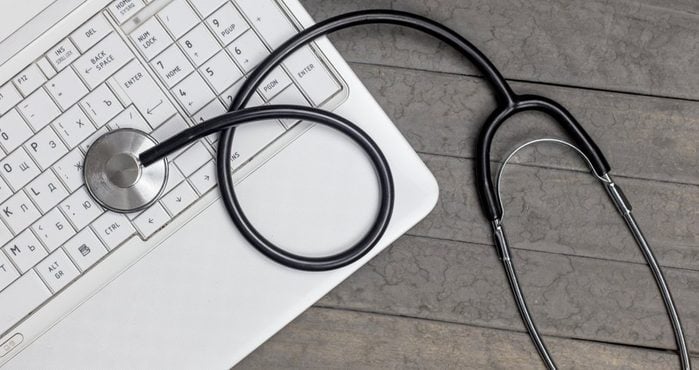
Enjoy Mediterranean meals
For those who follow a Mediterranean diet, the odds of developing diabetes are 20 to 23 percent lower according to a review of studies published in 2016 in Endocrine. The diet builds meals around plant-based foods, including fruits and vegetables, beans, nuts, whole grains, and olive oil. You eat fish and chicken regularly, but not red meat, butter, or sweets. Phytonutrients and fiber in the plant foods help maintain healthy blood sugar levels, and the olive oil might reduce inflammation. The Mediterranean diet helps keep your glucose levels on an even keel, versus some sneaky things that raise your blood sugar levels.
(Related: The Secret Ingredient You Need for the Mediterranean Diet)

Go blue
Eating more anthocyanins—the nutrients that give grapes and berries their bright red and blue colours—was linked to healthy blood sugar levels in a study published in 2014 in the Journal of Nutrition. Researchers found that those who consumed plenty of anthocyanins had lower insulin resistance.

Don’t skip breakfast
If you frequently miss a morning meal, you may be more likely to develop type 2 diabetes. Eating breakfast may help stabilize blood sugar levels throughout the day. Prepare a healthy blend of protein, complex carbs, and fat—yogurt mixed with fruit and nuts, for example. Starting the day with lots of simple carbs (such as a bagel and orange juice) is just as bad for your blood sugar as skipping the meal, according to research published in Diabetes Care.
(Related: Is Breakfast Really the Most Important Meal of the Day?)

Sweat and strengthen
Several studies have found that women who did both cardio (at least two and a half hours) and strength training (at least one hour) every week had the lowest diabetes risk. It can be as much as one third less than that of non-exercisers. After an exercise session, your muscles take up more glucose from the bloodstream. As you become more fit over time, cells become more sensitive to insulin.

Step away from the desk (and the TV)
Walk around for two minutes after every 20 you spend sitting down. Many studies have researched the benefits of walking to promote healthy blood sugar levels and lessen spikes in your blood sugar after you eat. A study published in 2013 in Diabetes Care found that three 15-minute daily walks after meals can significantly lower blood sugar levels for mature people. But walking any time is good for people of all ages; just fit it into your day whenever you can.
(Related: Easy Ways to Make Walking More Fun)

Calculate your risk
To help you know what is a healthy blood sugar level and whether you are at risk, complete a diabetes risk test, and take the results to your next doctor’s appointment, suggests Robert Ratner, MD, chief scientific and medical officer of the American Diabetes Association. A higher score may spur earlier or more frequent blood sugar checks.
(Related: Prediabetes—What It Is and How You Can Still Prevent Diabetes)

Examine your medicine cabinet
Drugs for common conditions—such as steroids to control asthma, statins to improve cholesterol levels, and diuretics to lower blood pressure—may raise what is a healthy blood sugar level. Ask your doctor whether other medications can treat your condition without such side effects.
Next, check out the best herbs and supplements for diabetes.
